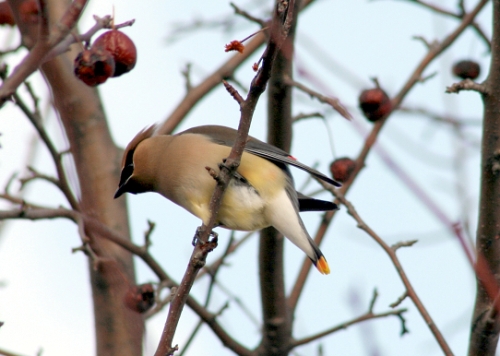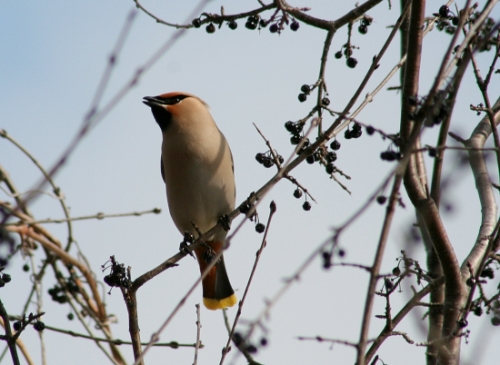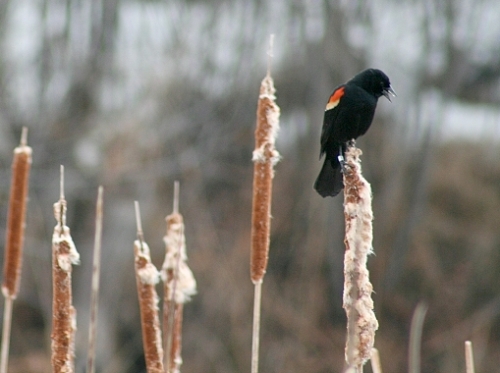|
|
THIS WEEK |
THIS SPRING |
2009 TOTAL |
SITE TOTAL |
|
# birds (and species) banded |
-- |
-- |
32 (6) |
18953 (105) |
|
# birds (and species) repeat |
-- |
-- |
-- |
3348 (65) |
|
# birds (and species) return |
-- |
-- |
6 (4) |
460 (32) |
|
# species observed |
38 |
38 |
52 |
197 |
|
# net hours |
-- |
-- |
24 |
30489.3 |
|
# birds banded / 100 net hours |
-- |
-- |
133.3 |
62.1 |
|
|
Note: table does not include nocturnal banding (owls) |
Bander-in-charge: Marie-Anne Hudson
Censusers: Jean Beaudreault, Mike Beaupré, Jeff Harrison, Barbara MacDuff, Chris Murphy, Rodger Titman
Notes: With the end of the winter season, comes the beginning of the Spring Migration Monitoring Program (SMMP) at MBO! Our spring season is defined as the 10-week span from March 28 through June 5, with banding occurring daily from April 18 to June 2. As a stark contrast with last year’s snowy spring start, this year began with wonderfully warm temperatures and only a few icy patches left in the darkest spots along the census trail. We observed a whopping 14 more species this week than at this time last year, likely a reflection of warmer conditions.
This week there were seven new species for 2009, and all 38 were new for spring. The abundance of the top ten species reflects the warmer conditions as well – there are so many more birds around now than last year. The spot claimed by the Snow Geese is a little misleading as they were only seen on one day, but numbering around 1300! We believe that the Bohemian Waxwings that have been seen in flocks of roughly 300 will be leaving us soon, as they tend to. But who knows? Maybe they’ll stick around long enough for us to band one of them…
|
#
individuals banded |
mean #
individuals observed daily |
|
- |
1. Canada Goose (292.6) |
|
- |
2. Greater Snow Goose (185.7) |
|
- |
3. Bohemian Waxwing (54.6) |
|
- |
4. Ring-billed Gull (26.1) |
|
- |
5. Red-winged Blackbird (25.1) |
|
- |
6. American Crow (19.9) |
|
- |
7. American Robin (14.7) |
|
- |
8. Black-capped Chickadee (10.4) |
|
- |
9. Song Sparrow (10.0) |
|
- |
10. Wood Duck (8.9) |
|
|

What’s the difference? The easiest way to tell a Bohemian Waxwing (below) from a Cedar Waxwing (above) is the presence of a “rusty bum” on the Bohemian, whereas Cedars have white undertail feathers (Photos by Greg Rand)

|



